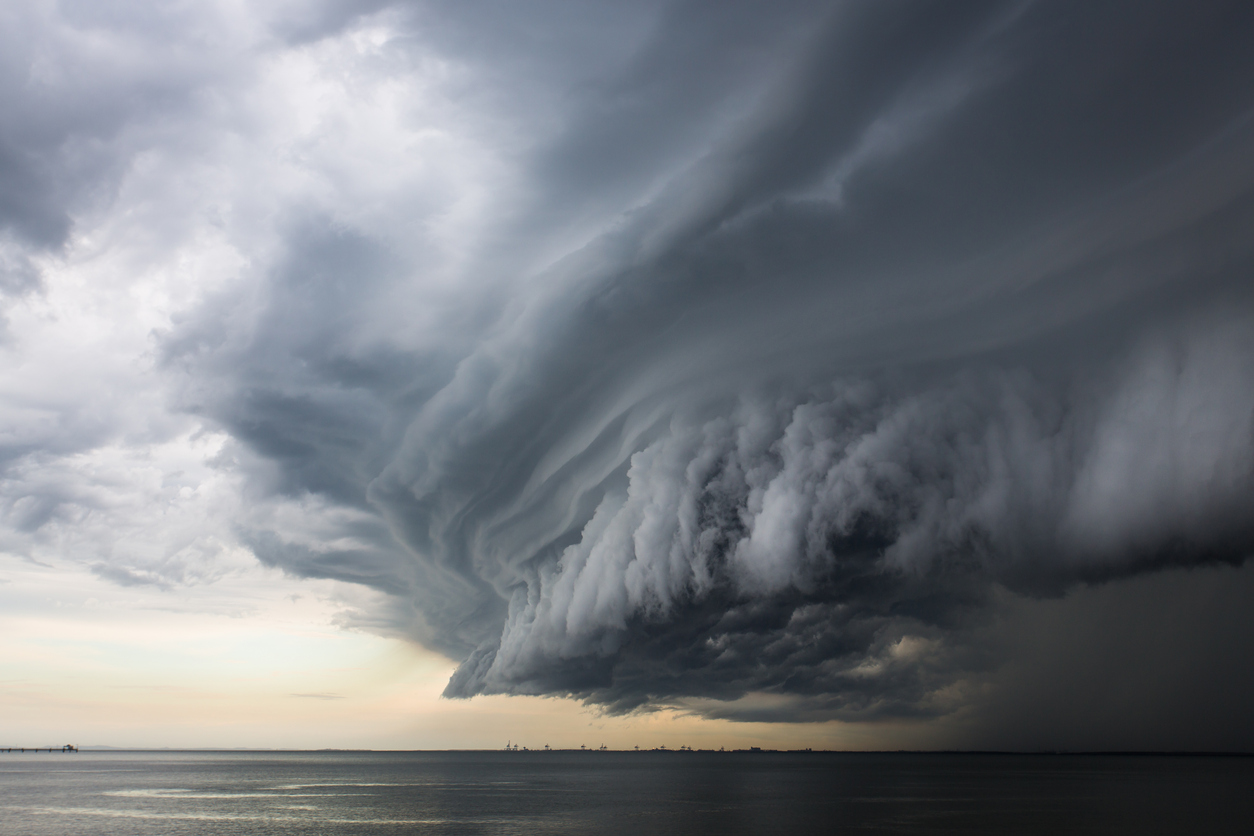According to the National Centers for Environment Information (NCEI), during the last two decades, there have been 220 confirmed weather/climate disaster events affecting the Southeast climate region, with losses exceeding $1 billion each. These events included 19 drought events, 12 flooding events, six freeze events, 106 severe storm events, 52 tropical cyclone events, six wildfire events, and 19 winter storm events.

Source: NCEI, January 2025
Severe convective storms (SCS) are local storms that include thunder, lightning, torrential rain, hail, devastating straight-line winds, tornadoes, and temperature fluctuations. These events, caused by rising heat and moisture, have become one of the most common damaging events in the United States, accounting for 76% of annual reported catastrophic insured losses for personal and commercial lines combined since 1998, according to Verisk. In addition, frequent, low-loss storms may be underreported, raising this figure even higher.
Tornado and Freezing Trends
The Southeast is home to “Dixie Alley,” which experiences frequent and destructive tornadoes. In recent years, there has been a shift in tornado activity, with more events occurring outside the traditional Tornado Alley in the Plains.
The Southeast is not accustomed to sustained freezing temperatures, and infrastructure is often not designed to withstand prolonged cold. Freeze events, like the winter storm in February 2021 and, more recently, the crippling winter storm that delivered now as far south as Florida, can lead to widespread infrastructure failure, including frozen pipes and power outages, amplifying losses as many homes and commercial properties in the Southeast lack sufficient insulation or freeze protection.
Stricter enforcement of building codes can help reduce vulnerabilities to tornado damage, such as installing hail-resistant roofing and insulated pipes. In addition, incorporating freeze-resistant designs in plumbing and HVAC systems is critical.
Behind the Trends
Studies indicate that climate change and warmer temperatures are increasing the intensity and frequency of convective storms. For example, Alabama, Georgia, and Mississippi frequently experience tornadoes and hailstorms, particularly in spring and early summer.
Population growth and urban sprawl in metropolitan areas like Atlanta, Charlotte, and Nashville have increased the concentration of assets in vulnerable locations. Moreover, higher property values in these expanding urban areas exacerbate the economic and insured losses when storms occur.
Predicting Losses
Storms vary in frequency, duration, severity, and location, with severe convective storms unpredictable. Additionally, according to Verisk, severe convective storm frequency and intensity can vary dramatically yearly, depending on various factors, including macroclimate patterns.
Thunderstorms can occur almost anywhere, with high-risk areas and seasons shifting and spreading over time.
As a result, previous loss data may not be reliable predictors of future losses, making it challenging for Property insurers to achieve rate adequacy for these risks. Reinsurers and insurers are developing advanced catastrophe models better to align risk pricing with exposure in these high-risk areas.
The Southeast’s exposure to convective storms and freeze events represents a growing challenge for municipalities, insurance carriers, and reinsurers. Efforts to improve resilience through better construction practices, risk modeling, and public awareness will play a pivotal role in managing future losses.
About Seneca Insurance Company
Seneca Insurance Companies are known for having a broad appetite for writing property risks. We offer admitted and non-admitted ISO-based policies, with catastrophe perils based on location and risk characteristics.
